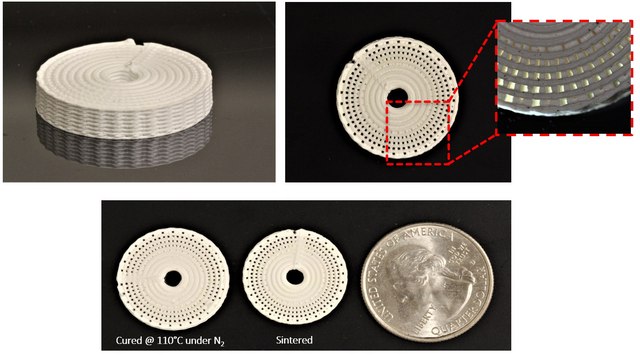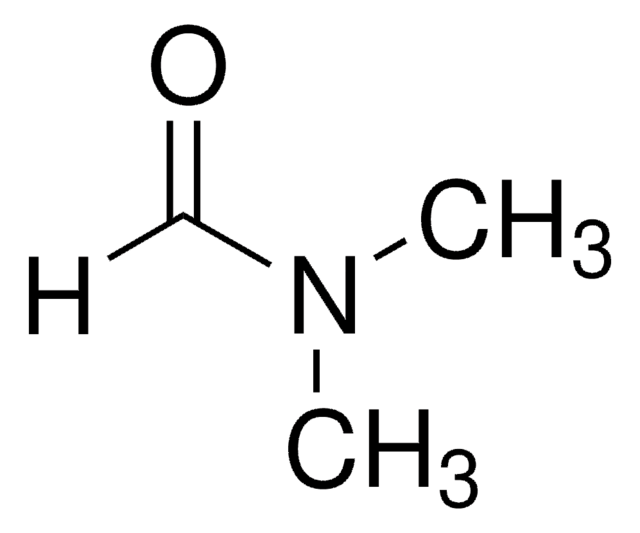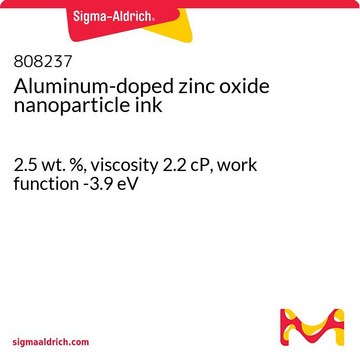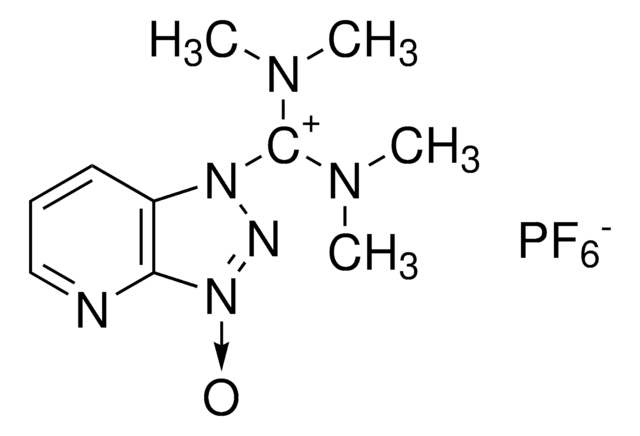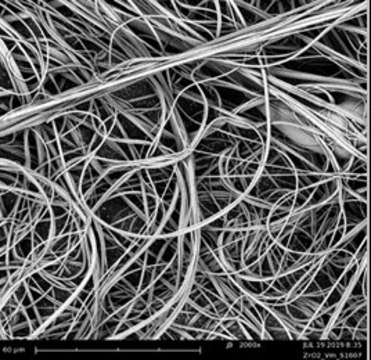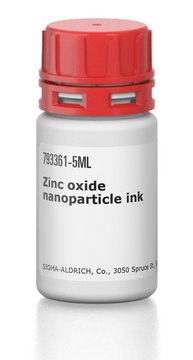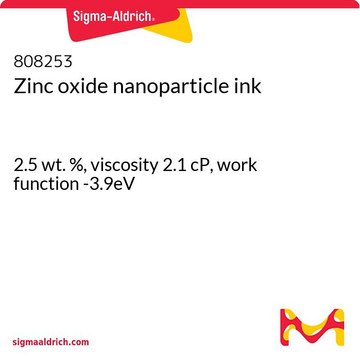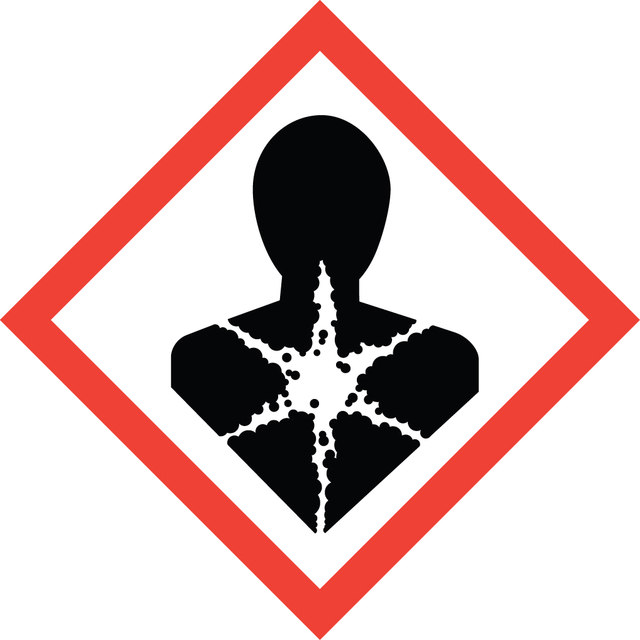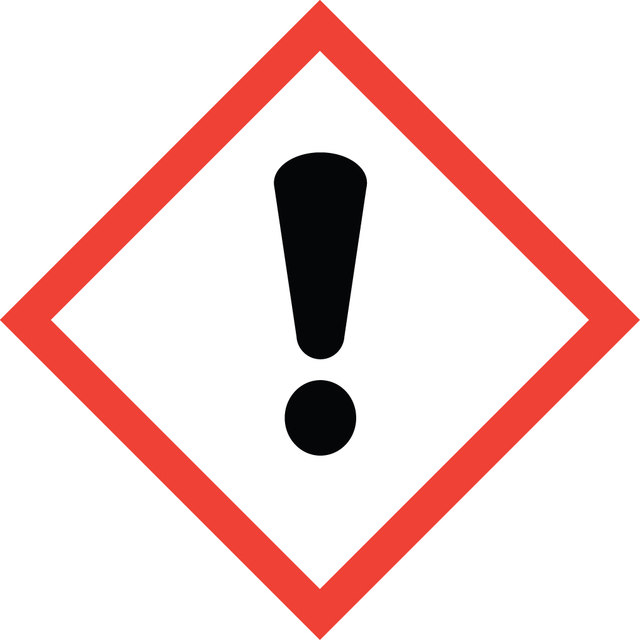901886
3D Printing Zirconia ink
Synonym(s):
3D printing ZrO2 ink, Zirconia, ZrO2, ZrO2 ink
Sign Into View Organizational & Contract Pricing
Select a Size
All Photos(1)
Select a Size
Change View
About This Item
UNSPSC Code:
12352303
Recommended Products
form
liquid
greener alternative product characteristics
Design for Energy Efficiency
Learn more about the Principles of Green Chemistry.
sustainability
Greener Alternative Product
viscosity
20-60 Pa.s
greener alternative category
storage temp.
2-8°C
General description
We are committed to bringing you Greener Alternative Products, which adhere to one or more of The 12 Principles of Greener Chemistry. This product belongs to Enabling category of greener alternatives thus aligns with "Design for energy efficency". Graphene based inks are ideal elements for 3D printed energy storage devices. Click here for more information.
Application
This product can be used in material extrusion 3D printing technique.
This research grade (not for human use) zirconia 3D-printing ink can be used for printing using a direct extrusion (pneumatic or mechanical) 3D-printer into multi-layered, three-dimensional objects at room temperature. This ink should only be used in a well-ventilated environment. The extruded material rapidly solidifies and allows creation of complex, user-designed forms. Despite being mostly zirconia, the printed solid material is flexible (may even have limited elastic properties). The solids loading of the as-dried material is 70 vol.% zirconia, 30 vol.% PLGA. This zirconia ink can be utilized to create three-dimensional structures on their own, or co-3D-printed with other 3D-printing inks to create multi-material structures. The ink may also be mixed with other 3D-printing inks to compound them prior to utilization. Due to the mechanical flexibility of the material after drying, complex 2D and 3D forms can be created. This ink may also be utilized in non-3D-printing applications such as coating (dip-coating or direct painting), thread fabrication, or casting into molds.
Our zirconia 3D-printing ink is comprised of micron sized zirconia particles suspended in a mixture of organic solvents containing dissolved, high molecular weight elastomeric, biocompatible polyester (polylactic-co-glycolic acid; PLGA). Prior to further use, to remove residual solvents after 3D-printing (or other application such as coating, direct painting etc) the zirconia composite material should be washed in 70% ethanol and then by water. The 3D-printed zirconia can be used as flexible ceramic composite or it can also be sintered (1650 °C recommended) in a non-oxidative atmosphere to yield zirconia parts. As sintered, zirconia is highly chemically and thermally stable, and can be used for a wide variety of high temperature applications. Zirconia also has numerous hard biological tissue (teeth and bone) applications, and can serve in it as as-printed, washed form as flexible ceramic composite cell scaffold, or in its sintered form, as a rigid ceramic scaffold/implant.
Our zirconia 3D-printing ink is comprised of micron sized zirconia particles suspended in a mixture of organic solvents containing dissolved, high molecular weight elastomeric, biocompatible polyester (polylactic-co-glycolic acid; PLGA). Prior to further use, to remove residual solvents after 3D-printing (or other application such as coating, direct painting etc) the zirconia composite material should be washed in 70% ethanol and then by water. The 3D-printed zirconia can be used as flexible ceramic composite or it can also be sintered (1650 °C recommended) in a non-oxidative atmosphere to yield zirconia parts. As sintered, zirconia is highly chemically and thermally stable, and can be used for a wide variety of high temperature applications. Zirconia also has numerous hard biological tissue (teeth and bone) applications, and can serve in it as as-printed, washed form as flexible ceramic composite cell scaffold, or in its sintered form, as a rigid ceramic scaffold/implant.
Caution
Prior to use mix until the ink becomes homogeneous
Signal Word
Danger
Hazard Statements
Precautionary Statements
Hazard Classifications
Aquatic Chronic 3 - Carc. 2 - Eye Irrit. 2 - Repr. 1B - Skin Irrit. 2 - STOT SE 3
Target Organs
Central nervous system
WGK
WGK 3
Regulatory Information
新产品
Choose from one of the most recent versions:
Certificates of Analysis (COA)
Lot/Batch Number
Don't see the Right Version?
If you require a particular version, you can look up a specific certificate by the Lot or Batch number.
Already Own This Product?
Find documentation for the products that you have recently purchased in the Document Library.
Our team of scientists has experience in all areas of research including Life Science, Material Science, Chemical Synthesis, Chromatography, Analytical and many others.
Contact Technical Service